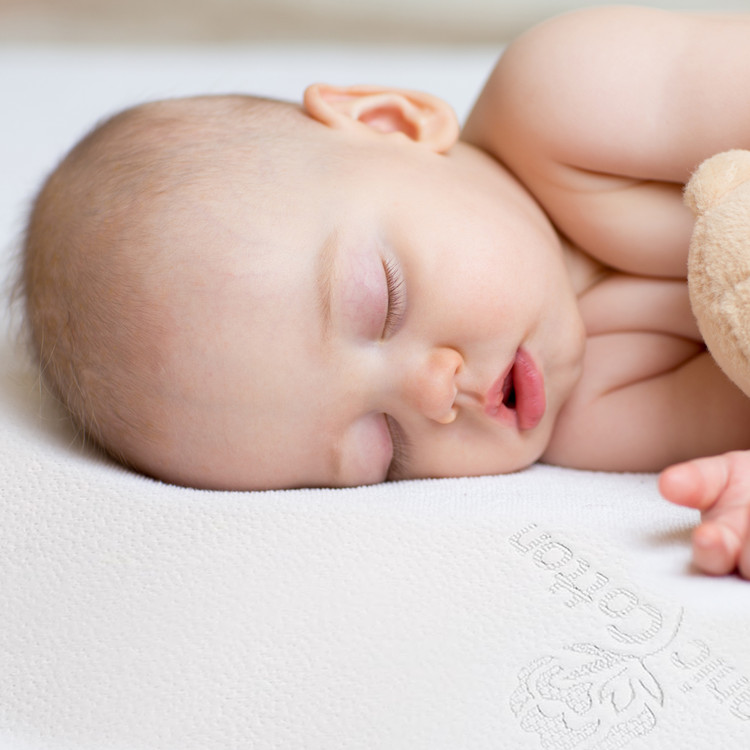The Fundamentals Of Safe Sleep For Infants
Posted by Ann on 18th Sep 2023
Sep 18, 2023
The Fundamentals of Safe Sleep for Infants
When it comes to ensuring a secure sleeping environment for your baby, the American Academy of Pediatrics (AAP) is your primary resource.
ABCs
"Safe Sleep: Recommendations" offers comprehensive guidance for infants up to one year old and should be your go-to reference for all matters related to sleep safety. Another valuable AAP resource to consult is "How to Keep Your Sleeping Baby Safe."
The first principle of safe sleep is adhering to the ABCs:
Alone: Babies should sleep alone in their crib or bassinet.
Back: Babies should be placed on their backs to sleep.
Crib or Bassinet: The sleep surface should be firm and covered with a fitted sheet, with no other bedding or accessories.
Additional AAP recommendations for safe sleep include:
- Room Sharing: It is advisable to room share with your baby for the first six months, preferably up to the first year. However, it's important to note that room sharing is not the same as bed sharing. Infants should sleep near their parents' bed on a separate surface, such as a crib, portable crib, playard, or bassinet. It's worth mentioning that there is no official AAP recommendation for bedside or in-bed sleepers, as there is no published data available for those products.
- Avoid Bed Sharing: Never bring your baby into your bed for sleep, and refrain from letting your little one sleep on a couch or chair.
- Keep Sleep Space Clear: Keep soft objects and loose bedding, such as stuffed animals, toys, teethers, pillows, quilts, bumpers, and blankets, away from your baby's sleep area.
- Swaddling: Swaddling is permitted, but it's essential to ensure that the swaddle is neither too tight nor too loose. Discontinue swaddling as soon as your baby shows signs of rolling over.
- Consider Pacifier Use: Consider offering a pacifier at nap time and bedtime, especially once breastfeeding has been established.
- Avoid Alcohol and Illicit Drugs: Steer clear of alcohol and illicit drug use during pregnancy and after birth.
Sudden Infant Death Syndrome (SIDS): A Crucial Insight
Many of the recommended safe sleep practices aim to prevent Sudden Infant Death Syndrome (SIDS). While SIDS can be distressing, it's essential to remember that it is rare, and new parents can take several steps to create a safer sleeping environment for their baby.
What Is SIDS?
What Causes SIDS?
SIDS stands for Sudden Infant Death Syndrome. It refers to the unexplained, sudden death of an infant under one year old. According to the AAP, approximately 3,500 infants die each year due to sleep-related causes. While researchers suspect that SIDS might be associated with defects in the part of an infant's brain that controls breathing and arousal from sleep, no definitive answers have been found yet.
What Are The Risk Factors For Sids?
SIDS risk factors can be categorized into maternal (parent) and infant/environmental factors. Maternal risk factors include:
- Young maternal age
- Maternal smoking during pregnancy
- Drug and alcohol use
- Late or inadequate prenatal care
Infant and environmental factors encompass:
- Prematurity
- Low birth weight
- History of a sibling dying from SIDS
- Sleeping positions, including prone (belly) sleeping, sleeping with bedding accessories or loose blankets, and bed sharing
How Can You Precent SIDS?
Research indicates that creating a safe sleep environment for your baby by adhering to all safe sleep guidelines can help reduce the risk of SIDS, as advised by the Centers for Disease Control (CDC). Additional recommendations for reducing the risk of SIDS include:
- Breastfeeding your baby.
- Regular checkups with your baby's healthcare provider.
- Dressing your baby appropriately for the environment and avoiding overheating.
By following these guidelines and recommendations, you can provide a secure sleeping environment for your baby and reduce the risk of SIDS.

